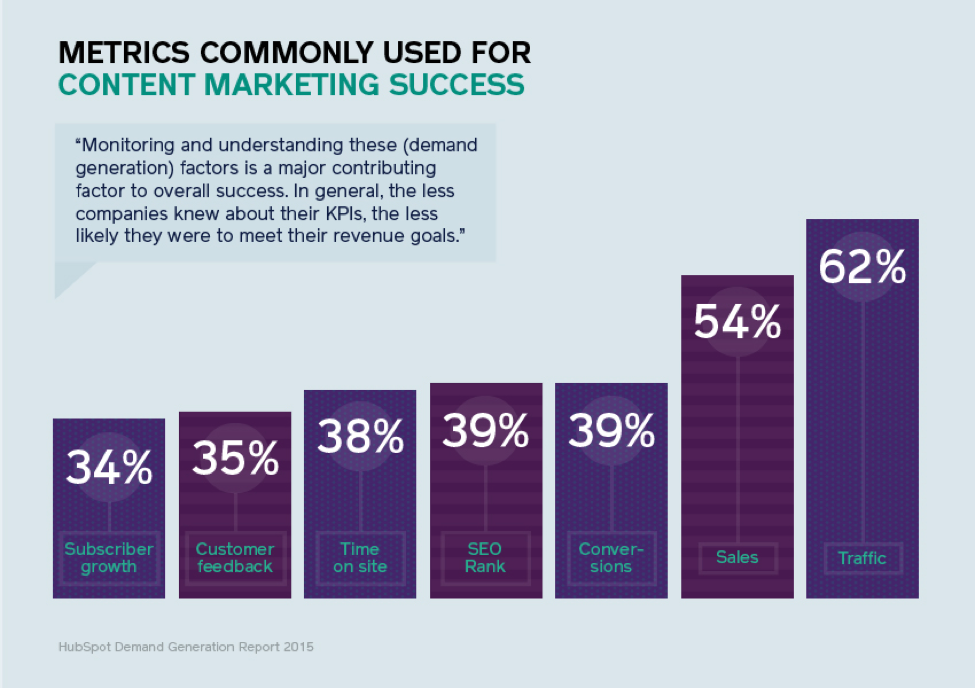- Share Content Marketing Metrics: Account Based Marketing Edition on Facebook
- Share Content Marketing Metrics: Account Based Marketing Edition on Twitter
- Share Content Marketing Metrics: Account Based Marketing Edition on Linkedin
- Share Content Marketing Metrics: Account Based Marketing Edition via email
Content marketing is like fishing with a net; account based marketing (ABM) like fishing with a spear. What if you throw that spear, hit the fish, and then use the net to bring it in? What if two fishermen on the same boat catch a fish with a spear and a net at the same time? Who gets the credit? Can the guy with the net really help the guy with the spear catch one specific fish? account based marketing metrics can help answer these questions.
ABM is a strategic approach to marketing that focuses on select customer accounts and treats them as markets of one. When done well, account based marketing has the potential to be one of the most lucrative methods of marketing today.
However, tracking the impact of content is a major struggle for content marketers today. Even more so in a world where ABM is at the forefront of many people’s content marketing strategy. This article discusses the most relevant account based marketing metrics as they apply to content marketing.
Account Based Marketing and Content Marketing: Definitions
According to the Content Marketing Institute, content marketing:
…is a strategic marketing approach focused on creating and distributing valuable, relevant, and consistent content to attract and retain a clearly-defined audience—and, ultimately, to drive profitable customer action.
Account Based Marketing is, according to Engagio CEO Jon Miller, “…a strategic approach that coordinates personalized marketing and sales efforts to open doors and deepen engagement at specific accounts.”
Content marketing is about attracting an audience. Account based marketing is about personalized marketing and specific accounts. Both are effective and widely implemented.
- 80 percent of marketers measuring ROI say ABM outperforms other marketing investments.
- More than 90 percent of marketers believe ABM is essential to B2B marketing.
- Content marketing costs 62% less than outbound marketing, and generates three times as many leads.
While both strategies can be effective, the methodology behind them is arguably at odds.
Account Based Marketing and Content Marketing: Friend or Foe?
 JOE CHERNOV
JOE CHERNOVVP Marketing at InsightSquared, keynote speaker @jchernov
“Inbound marketing and account-based marketing are like a taco and a burrito. They have the same ingredients, they’re just shaped differently.”
Regardless of methodology, account based marketing can’t work without the personalized blog posts, mailers, and sales enablement content generated by content marketing.
According to the Harvard Business Review, stakeholders who perceive supplier content to be tailored to their specific needs are 40 percent more willing to buy from that supplier than stakeholders who don’t personalize.
Similarly, MarketingSherpa research indicates that 82 percent of prospective customers value content targeted to their specific industry.
In the same way that content created for an account based marketing strategy should be tailored to that strategy, the way in which you measure that strategy should also be different.
Think Differently for Account Based Marketing Metrics
There are eight categories you should consider when developing a system for measuring your content marketing.

While these are important for determining content marketing success, account based marketing changes the way these metrics are interpreted.
Consider these three points when analyzing content metrics from an ABM perspective.
- Instead of measuring people, measure accounts. (But still write to people.)
- Quality is much more important than quantity. While most content marketers are interested in increasing their website’s reach or overall visits, these metrics are unimportant with an ABM model. It’s less about how many people are coming to your site, and more about who is coming to your site.
- Leads are less important than opportunities or revenue. Many leads can make up one account. When employing an ABM model, content should focus on the impact on the account or revenue generated.
What Your new Metrics Outline Should Look Like:
- Consumption Metrics:
What percentage of target accounts are consuming your content?
Which channels are they using?
How frequently and how in-depth is their consumption? - Sharing Metrics:
Which of your content pieces are being shared?
Who is sharing them?
How/where are they sharing?
How often are they being shared? - Lead Metrics:
How is content supporting demand generation in terms of lead generation and lead nurturing (middle-of-the-funnel) at target accounts? - Sales Metrics:
How is your content influencing bottom-of-the-funnel results?
Is your content enabling targeted account pipeline?
How is your content driving revenue? - Retention (Subscription) Metrics:
How effective are you at holding your audience’s attention beyond the initial point of contact? - Engagement Metrics:
Does your content inspire target users to take action?
What kind of action are they taking?
How frequently and consistently are they taking action? How does this correlate with the success of your account-based goals? - Production Metrics: (to assess team and/or individual performance)
Is your team performing against editorial calendar deadlines and goals?
How long does it take your team to turn a content idea into a published piece of content?
How many pieces of content do you regularly publish in a period of time? - Cost Metrics: (to determine return on investment (ROI))
What are your overall content marketing costs?
What are your costs per piece? Per creative resource?
Four Big Changes to Account Based Marketing
Account based marketing metrics require more direct, tangible numbers like accelerated pipeline velocity, increased lead generation, and more conversions… there’s no spray and pray in ABM, it’s about making every piece of content count.
—Leadspace
After tweaking your preexisting account based marketing metrics to focus on the success of your content from an account level, ensure your content marketing metrics are optimized for ABM. There are four main areas of measurement to focus on:
- Coverage
Build contacts at target accounts rather than building overall reach. This total is much more important than overall increases. You can measure this using unique traffic from account IP addresses. - Awareness
Look at web traffic from target accounts rather than overall traffic. Again, the increase in numbers and percentages from target accounts is more important than overall increases. - Engagement
Create a heat map for engagement by title. Engagement is no longer a question of “how much?” but instead “who”—and how influential that person is. Measure this using the total traffic from account IP address, total number of touchpoints by account, total time spent with an account, or total time spent with a decision maker at an account. - Influence
Track your content directly to pipeline revenue using software or a defined strategy. This is hugely beneficial not only to your account based marketing strategy but your content strategy too. However, the problem with only using Influence to measure success is the lag in results from campaign execution.
Influence is intimately related to Time to Close. Influence is a KPI popularized by Jon Miller at Engagio. It can help you determine which of your marketing activities contributes the most to revenue. Rather than attributing sales credit to every marketing activity (there can be MANY), Influence attribution requires looking at groups of accounts that have a similar profile. By comparing these successfully closed accounts, you can determine which of your account based marketing activities are truly adding value.
—Metadata
After making general changes to your measurement methodology and taking a deeper dive into these four categories, consider how your ABM strategy changes the content created. This changes the content and account based marketing metrics.
Consider Strategy Changes to Inform Measurement Changes
An ABM content strategy naturally looks different to a traditional content strategy. Consider these ABM strategies that are less common or important in a traditional content strategy:
- You send printed content and direct mail to decision makers at target account.
- Target accounts receive sales enablement content tailored to their needs/questions.
- A lead at a target account shares content with other contacts at an account.
(Share PDFs as a link rather than attachment; it can capture some of the sharing in your
analytics.) Here are some suggestions for tracking these and why it matters:
| Situation | Why It Matters | How to Track |
| You send printed content and direct mail decision makers at target account.
|
92% of shoppers say they prefer direct mail for making purchasing decisions.
|
Track response rate to the mail, close rate and time to close. |
| Target accounts receive sales enablement content tailored to their needs/questions
|
As you’ll see in the attribution section of this article, ABM content strategy spans opportunity generation through to sale closed. You need account based marketing metrics that track this facet of your content marketing. | Track sales enablement content usage and selling time. |
| A lead at a target account shares content with other contacts at an account | Multiple leads at one account can contribute to a sale. If one contact is sharing pdfs or other content with the rest of the team, you need to know about this. |
Traditionally the types of questions you can now answer include:
- How many new leads were generated from a given piece of content?
- How many existing leads in my database were touched by a particular piece of content?
- Which pieces of content helped convert leads lower into the funnel?
- In which areas of the funnel do we not have sufficient content?
Developing an ABM Attribution Model
Once you have a clear idea of what to track in your ABM content strategy, start looking at those account based marketing metrics and create a related attribution model. ABM attribution models differ from traditional content marketing attribution models in two ways:
- They consider attribution from an account based perspective rather than a lead-based perspective.
- They enable marketing attribution past the opportunity stage through to the closing of a sale.
An ABM attribution model uses one funnel for sales and marketing instead of two. This allows you to look at an account journey as one holistic piece. It enables you to give appropriate credit to all content—including sales enablement content—and gives you a more comprehensive picture of how content is pushing potential buyers through your sales cycle.
You don’t have to do all this measuring manually. The following software will help drive your ABM analytics endeavors.
ABM/Content Analytics Software

For assistance measuring your content from an ABM perspective, the following tools are useful:
Engagio: Provides analytics and automaton for an ABM strategy. It connects to your website and existing Salesforce and Marketo accounts to keep track of leads, marketing programs, and site visitors. Engagio’s utilization of account based marketing metrics such as “engagement minutes” offers a straightforward way to track lead interest.
LeanData: Lean Data’s Demand Management product focuses on account-based reporting and nurturing to alter your strategy based on account based marketing metrics and attribution models.
Bizible: Assists with attribution of all kinds. According to Bizible’s website, their account-based measurement feature enables the measurement of everything from accounts to mailers and ties to revenue.
DemandBase: Offers a full suite of ABM solutions including account-based measurements that separate high-value account visitors from traditional metrics.
Curata CMP: Ties both gated and ungated content directly to revenue, leads generated, social shares, and more, so you can measure from both an ABM and content perspective. Also shows you content engagement at the account level.
ABM and content marketing can work together to help you close more business and increase revenue. To ensure your content marketing works with your ABM programs, develop a measurement methodology that uses accounts rather than leads, a single marketing/sales funnel, and attributes content beyond opportunity created through to revenue generated.
The Importance of Tracking Revenue in Account Based Marketing
Revenue has to be the mother of all metrics. It’s what we’re here for, right?
-Doug Kessler, Creative Director/Co-Founder, Velocity
Measuring revenue from an ABM standpoint requires measuring pipeline opportunities influenced. This tells you how much of the sales pipeline has been influenced by consuming one or more of pieces of your content. You can report on this metric for a single piece of content, over several pieces of content in a content marketing pyramid, or for all content across the board.
Cost Metrics
Cost metrics, like production metrics, track production efficiency, but exclusively examine the financial costs of content marketing, or the “I” (investment) part of ROI. Here are some places to start:
Production Costs per Post. If you are using freelancers to write content, it should be easy to track the cost per post based on their invoices. This gets harder when tracking full time internal writers.
Distribution Costs per Post. Many people assume content distribution is free. But with more and more content online, distributing it is getting more expensive—sometimes even more expensive than producing the content in the first place. Consider these distribution costs:
- Social Media Promotion. Time and equivalent pay spent on promoting your content.
- Influencer Marketing. After you have created your content, you may be reaching out to influencers to promote your post.
- Native Advertising. If you are using native advertising networks like Outbrain or Taboola, factor these costs in as well.
ROI Metrics
Last up is the holy grail—ROI metrics. These combine different classes of the aforementioned content and account based marketing metrics with a broad range of variations. Here are some to consider.
Return on Investment. For each piece of content x in Campaign C, take the $ amount of Revenue generated (a sales metric) by Content x and divide it by the ($ Production Cost for x + $ Distribution Cost for x) (a production metric). If the ratio is greater than 1, your content was profitable from a sales perspective.
You can similarly compute this for a single piece of content, or all your content marketing. Alternatively, C can represent all content produced by a particular writer, and the calculation will give you the ROI for that individual. If their ratio is less than 1, they may need to up their quality and/or quantity of content produced. Take this with a grain of salt however, since there are a lot of variables that influence revenue.

How to Implement Account Based Marketing Metrics for Content Marketing
- Incentivize your team. Your content marketing team, right down to individual writers, are accountable for achieving not only a certain level of content output, but also a certain level of content performance.
- Diagnose and troubleshoot. Content marketing metrics let you effectively diagnose when things don’t go as planned. For example, if your data tells you content is effective at the top of the funnel, but isn’t producing high quality opportunities at the bottom of the funnel, this may indicate you need better calls-to-action.
- Create alignment between divisions. If there is a singular focus on one ROI-based content marketing metric—particularly if you pay team members for it—walls between different functions will suddenly come down and teams will find new and more effective ways to collaborate.
For a thorough examination of how to measure the results of your content marketing, download The Comprehensive Guide to Content Marketing Analytics & Metrics eBook.












